When the Arab Spring pro-democracy movement began to sweep through the Middle East in 2011, Moroccan journalist Aida Alami was a brand-new graduate of Columbia University’s Graduate School of Journalism. Western reporters arriving in Tunisia and Morocco to cover anti-government protests sought her out, paying her about $150 a day to provide them with sources and insights. Alami received no byline credit, even though some stories by Western reporters merely repackaged the thoughts she’d shared over meals with journalists who’d parachuted in.
Foreign Correspondents Dig Into The Ethics of Overseas Reporting
An extraordinary group of foreign correspondents gathered at New York University to discuss working with local journalists, protecting vulnerable sources, and maintaining ethical bearings in difficult situations.
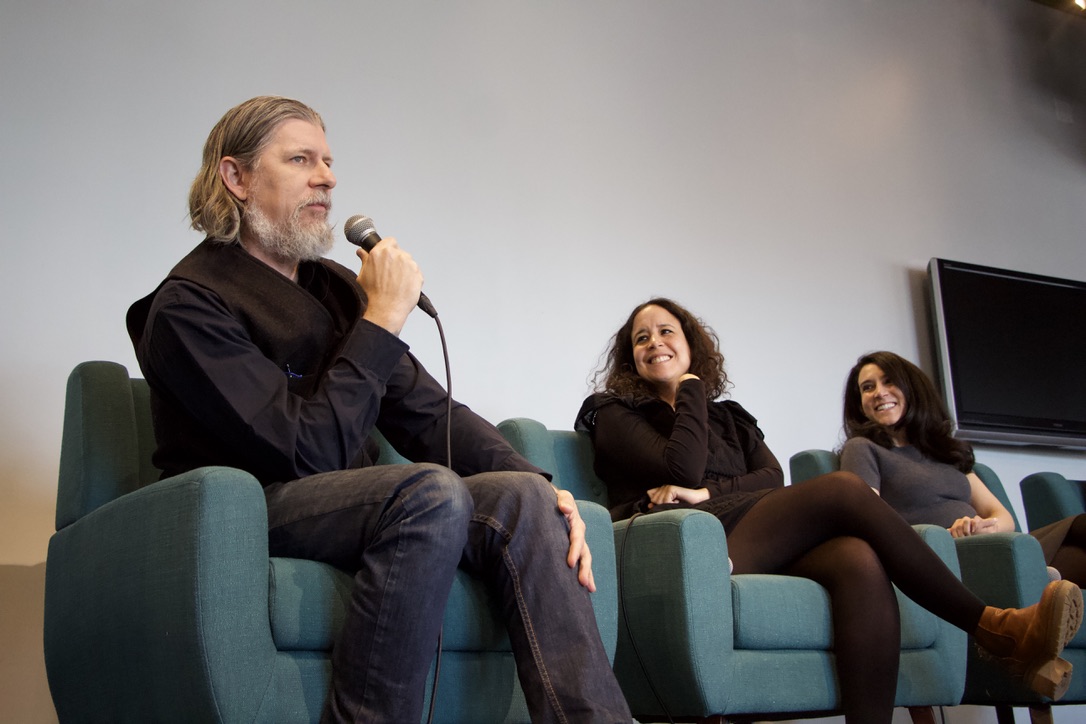
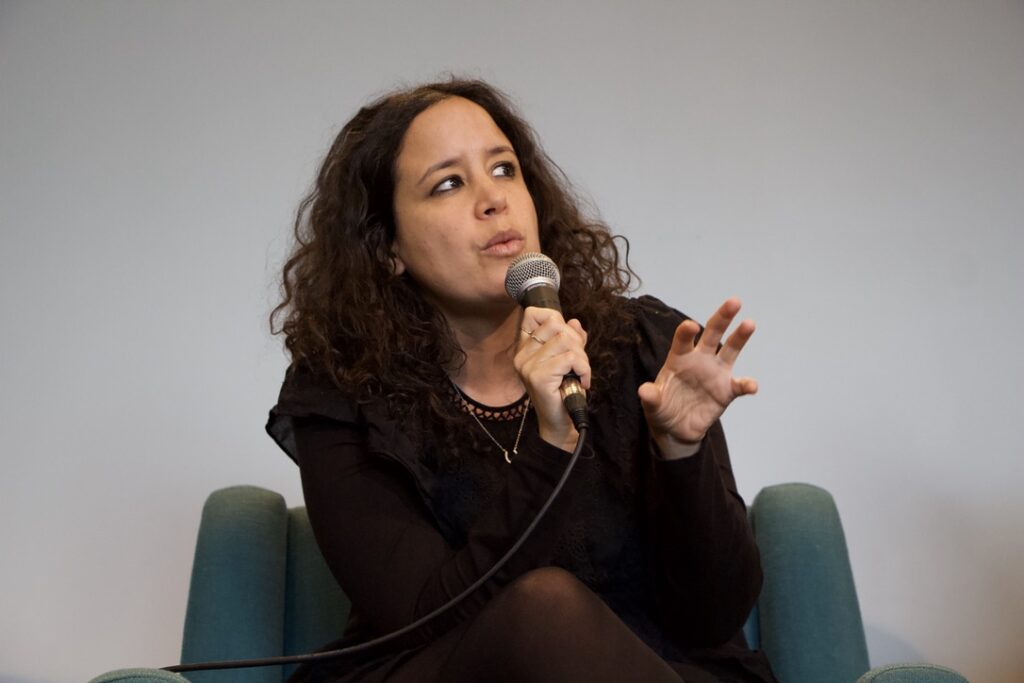
At the time, Alami said during a panel discussion on March 10 at the Arthur L. Carter Journalism Institute at New York University, she didn’t mind: She needed the money and experience.
But Alami quickly realized that there was a better way for Western journalists to work with local reporters. She became a journalism teacher, pairing her Moroccan students with American students in a true collaboration. The resulting stories, Alami said, showed the “more textured reporting” that emerges when foreign reporters partner with local journalists.
The relationship between U.S.-based correspondents and local journalists was one of the themes that ran through the panel discussion, which was co-sponsored by the Overseas Press Club of America and the NYU Ethics & Journalism Initiative. In addition to Alami, who has been a regular contributor to The New York Times since 2011 and is teaching this year at Columbia, panelists were award-winning international photojournalist Victor Blue and Pulitzer Prize-winning, New York Times investigative reporter Azmat Khan, who heads the Li Center for Global Journalism at Columbia. The discussion was moderated by Ethics & Journalism Initiative Director Stephen Adler.
Khan echoed Alami on the benefits of teaming up with locals who have a nuanced understanding of their own countries. Khan described how she trained students from the University of Mosul in the basics of investigative journalism so they could work with her in reporting on the human toll of U.S. airstrikes on ISIS forces. Khan’s 2021 New York Times Magazine story about civilians hit by U.S. strikes – which was part of her Pulitzer-winning package – credited Momen Muhanned, one of the students whom Khan trained, as a reporter on the piece.
Even more importantly, Khan said, the Times allowed her to be transparent about Muhanned’s role in her investigation. That transparency, she said, in turn helped Muhanned win subsequent jobs.
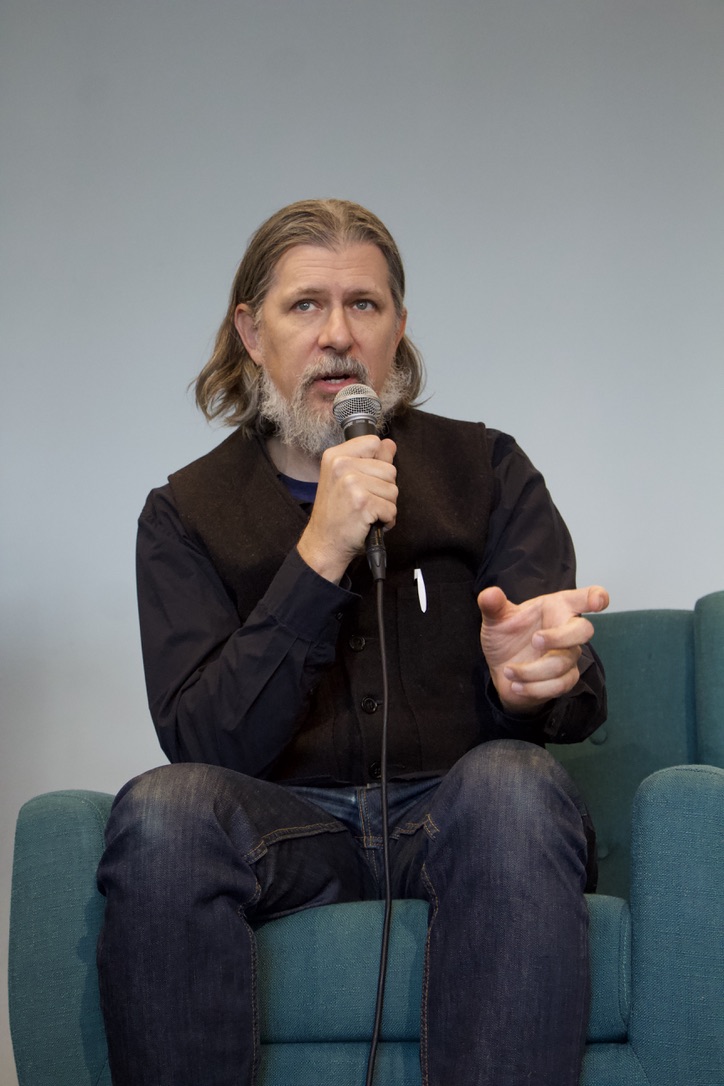
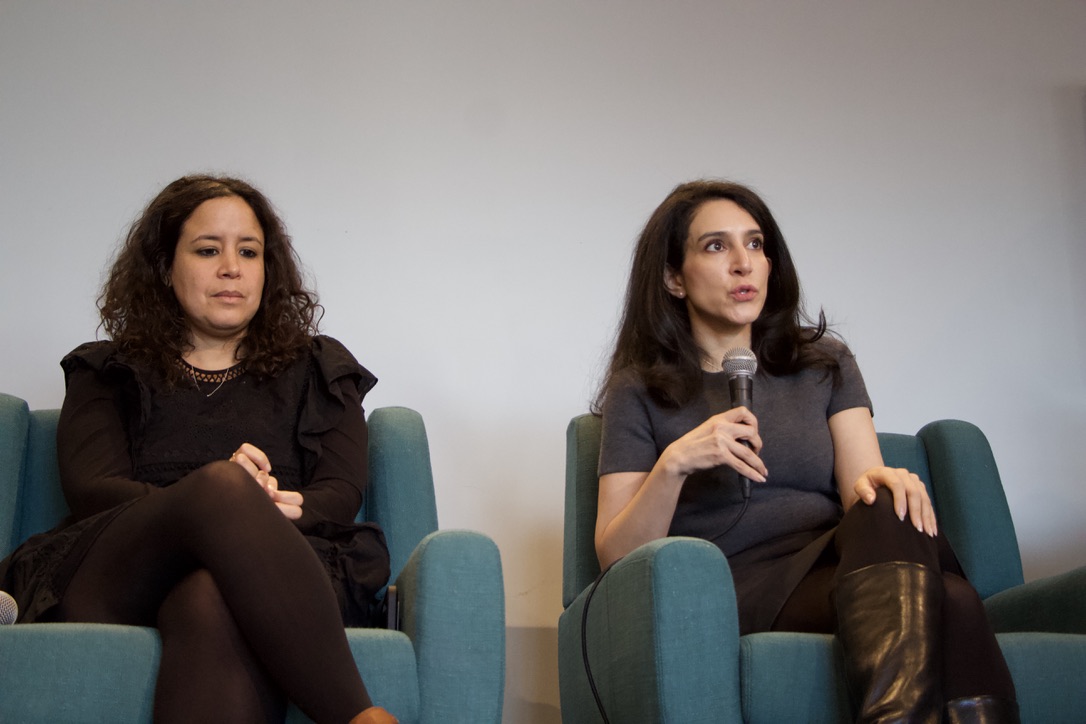
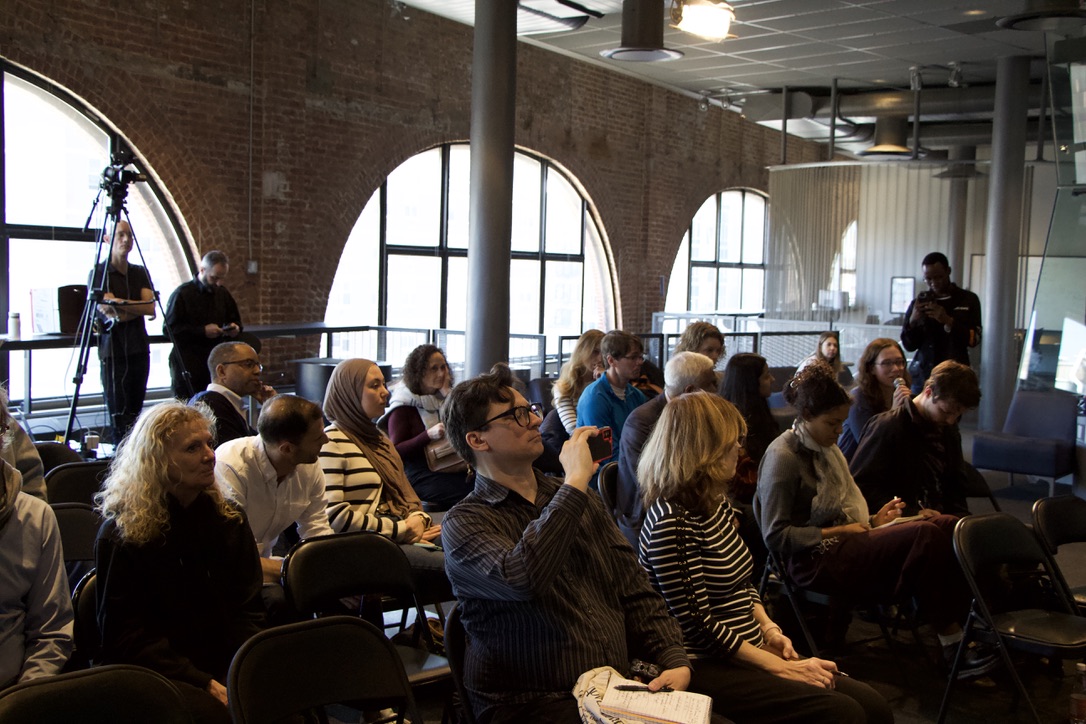
The second major theme of the panel discussion was working ethically with vulnerable local sources. Blue told the audience about his recent run-in with an unnamed magazine editor about a series of portraits he made of Afghans applying for special immigration visas to the United States. The editor asked if Blue would blur his subjects’ faces, explaining that the magazine was worried that the Taliban would use the photos to identify and target visa applicants.
Blue said no, arguing that the best protection for his subjects was to tell an international audience about them.
“My job is to put a face and a name to these big issues,” he said. “By blurring faces, we’re not doing that to serve our audience. We’re doing that to protect ourselves.” If he believes a subject is truly at risk from one of his photographs, Blue said, his answer is not to blur the subject’s face but not to use the photograph at all.
In response to a follow-up question after the panel discussion, Blue said he took extraordinary care to be sure that the Afghan visa applicants were fully aware that he intended to identify them by name and image in his series. His subjects, he said, all signed releases acknowledging as much.
Khan said she’s always mindful that in the cultures where she has focused her reporting, people are taught to be deferential to guests. So she typically begins interviews by outlining how she plans to use the information she obtains and emphasizing that sources don’t have to answer any of her questions. “At the end of the day, it’s their choice,” Khan said.
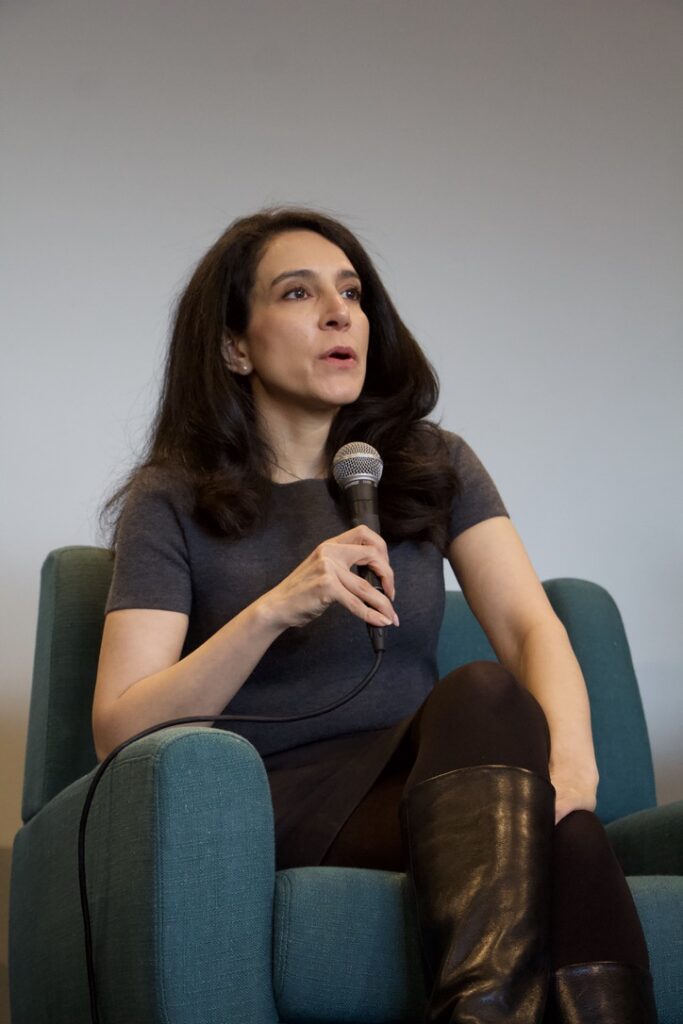
Alami’s journalism focuses on migration, so she said she’s constantly concerned about fallout for vulnerable sources. Like Khan, she said it’s crucial to be sure that sources understand the consequences of talking to her.
“I really respect people’s agency,” Alami said. “If someone tells me, ‘I really don’t care,’ and we talked about it and I make sure four or five or six times that it’s okay to use their interview, then it’s fine.”
Takeaways:
1. Stories benefit from true collaboration between U.S. journalists and local reporters. Local journalists can provide important cultural and historical context, can steer foreign correspondents away from misguided story ideas, and can provide invaluable know-how in fast-shifting situations. Foreign correspondents should, however, be aware of the local journalist’s own politics and perspectives in order to avoid being steered in the wrong direction.
2. Don’t let editors back home drive coverage that doesn’t match the facts on the ground. If your reporting is solid, push back. And if the editor insists on pursuing a misguided story, consider walking away.
3. Take time to educate vulnerable sources and subjects about the potential consequences of working with you. Be sure you have their informed consent – but respect their decision-making if they choose to proceed.
4. Understand that international correspondents are often entering incredibly complex situations. Strive to acknowledge that complexity instead of trying, in Blue’s words, to “flatten” your coverage.
Watch the full event video on Youtube:

